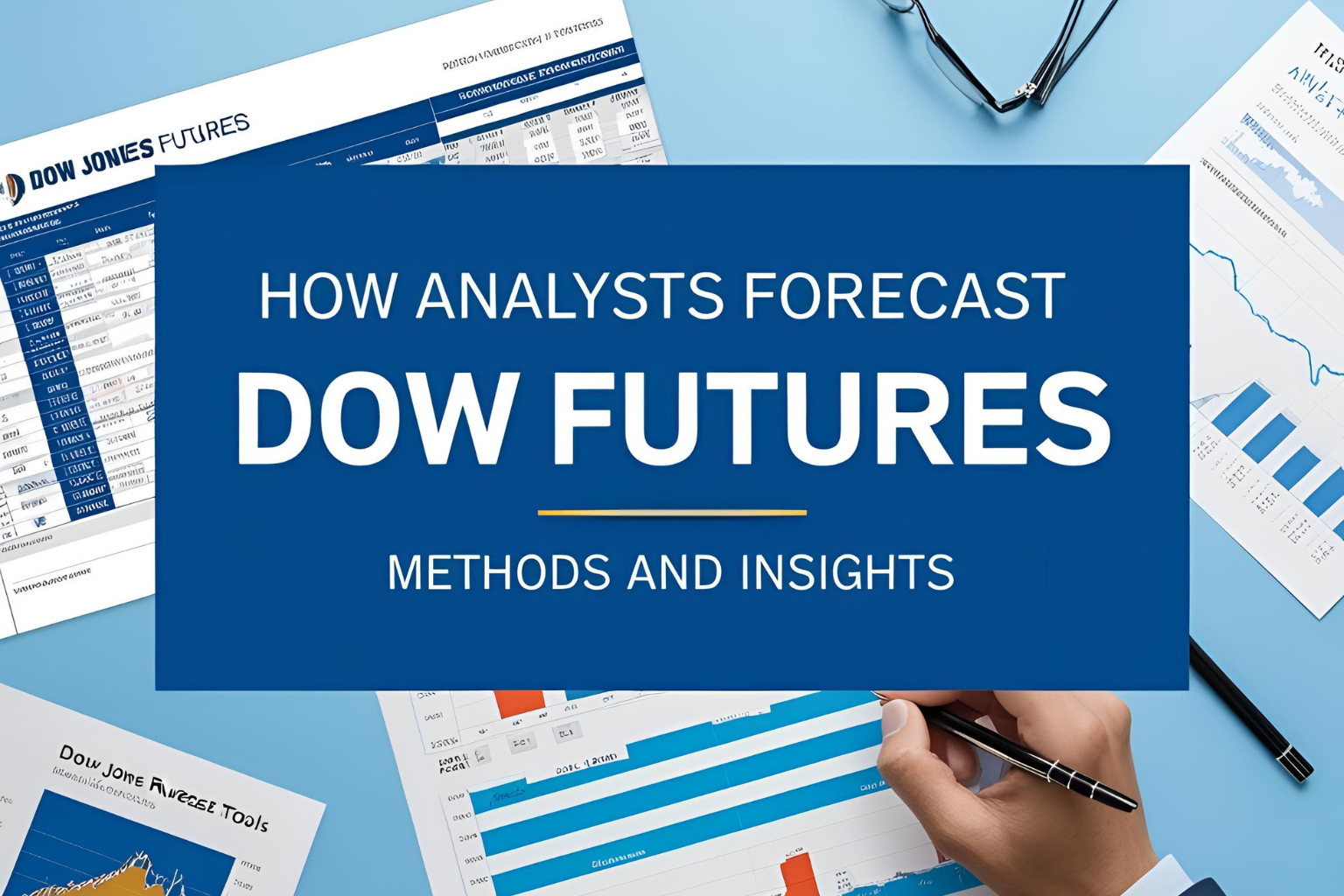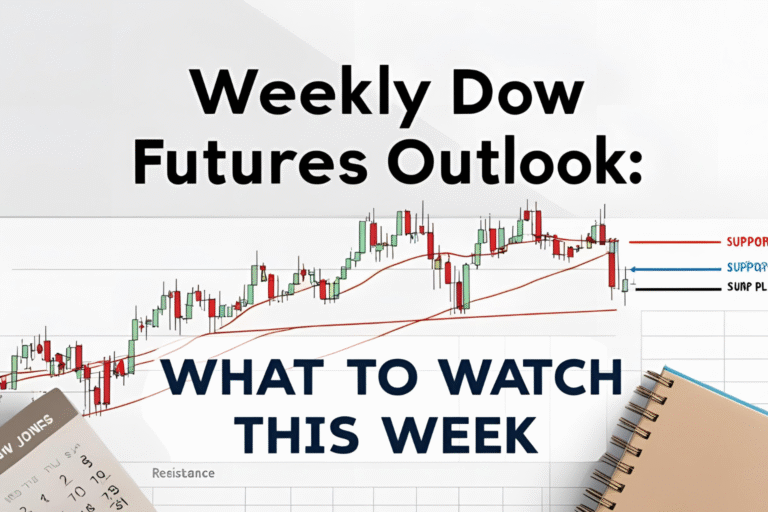How Analysts Forecast Dow Futures: Methods and Insights
Introduction
Wondering how professionals predict the market before it opens? The analyst DJIA futures forecast is a widely followed insight used by traders to anticipate Dow Jones movements. In this guide, we’ll explain how analysts make these forecasts, what tools they rely on, and how you can interpret their outlooks to make better trading decisions.
What Is a DJIA Futures Forecast?
A DJIA futures forecast is a short-term prediction of how the Dow Jones Industrial Average is expected to perform, based on the price movements of futures contracts. Analysts use various models to issue forecasts for:
- Daily or weekly market direction
- Reactions to economic reports or global events
- Key support and resistance levels
How Analysts Create Dow Futures Forecasts
- Technical Analysis
Analysts examine price charts and trends, looking for:- Candlestick patterns
- Moving averages (e.g., 50-day, 200-day)
- Momentum indicators like RSI and MACD
- Breakouts or breakdowns from trendlines
- Fundamental Factors
They also consider:- Economic reports (CPI, jobs data, GDP)
- Corporate earnings (especially Dow-listed companies)
- Federal Reserve announcements
- Global market sentiment and macro events
- Volume and Open Interest
Futures volume and open interest reveal trader participation and confidence in a move. - News Sentiment Analysis
Analysts track financial headlines, geopolitical news, and economic sentiment to assess likely futures direction.
Where to Find Analyst Forecasts for Dow Futures
- CNBC and Bloomberg
- Provide expert commentary and video analysis during pre-market and after-hours sessions.
- TradingView Public Ideas
- Analysts post technical chart forecasts and trade plans, often focused on YM (E-mini Dow).
- Investing.com Forecast Section
- Offers weekly outlooks and market sentiment tools tailored to Dow and index futures.
- Broker Reports
- Platforms like TD Ameritrade, Fidelity, or IG Markets publish market forecasts and analyst insights for their clients.
How to Interpret Analyst Forecasts
- Don’t follow blindly: Forecasts are helpful, but not guaranteed.
- Look for alignment: If multiple analysts and tools suggest the same trend, it strengthens the signal.
- Combine with your own analysis: Use forecasts to inform, not replace, your trading decisions.
Limitations of Forecasts
- Based on assumptions that may change suddenly (e.g., surprise Fed announcement)
- Can be outdated quickly in fast-moving markets
- Analysts can have biases based on their trading style or firm positions
Always treat forecasts as part of a broader trading plan—not a sure bet.
Conclusion
The analyst DJIA futures forecast can be a valuable tool when planning your trading day. By understanding how these forecasts are created and learning to read them critically, you can improve your timing, avoid surprises, and stay in sync with market sentiment. Combine expert forecasts with your own strategy to trade smarter.
FAQs
Q1. Are analyst forecasts always accurate?
No. They offer informed estimates, but markets are unpredictable. Always use proper risk controls.
Q2. Where can I get free Dow futures forecasts?
Sites like CNBC, Investing.com, and TradingView offer free expert insights and commentary.
Q3. Should I base my trades entirely on forecasts?
No. Use them to guide your strategy, but always validate with your own analysis.
Q4. Do analysts use AI or automated models for forecasting?
Yes. Many firms use quantitative models, including AI, to assist human analysis.
Q5. Can I become an analyst myself?
Absolutely. With time, education, and experience, you can learn to analyze the markets and build your own forecasts.


